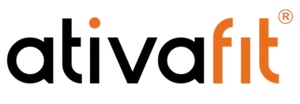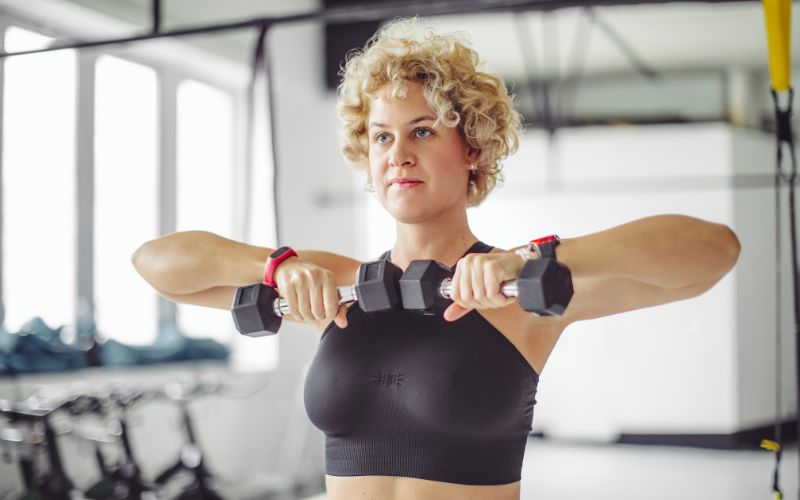If you're tired of crunches and sit-ups with no real progress, it’s time to try ab workouts with dumbbells. Adding weight to your core routine enhances muscle engagement, increases resistance, and yields better results over time. Dumbbells are simple, accessible, and can turn even basic ab moves into full-strength exercises.
This guide walks you through the benefits, proper technique, exercise list, and care tips to make the most of your dumbbell ab sessions. Whether you’re a beginner or building a strong core, dumbbells are your best training tool.
What Are Dumbbell Ab Workouts?
Dumbbell ab workouts are core-strengthening exercises that utilise free weights to increase resistance and enhance muscle definition in the abdominal region. Unlike traditional bodyweight movements, these workouts engage more muscle fibres by forcing your abs to work harder against the load. Exercises like Russian twists, weighted sit-ups, and dumbbell toe touches target your upper abs, lower abs, and obliques, helping you achieve a stronger, more defined core.
By using dumbbells, you can progress faster and add variety to your routine without needing complex machines or gym equipment. This makes dumbbell ab workouts ideal for home training, functional fitness, or anyone wanting to take their core strength to the next level.
Ativafit offers premium fitness gear designed for your home workouts. From adjustable dumbbells to benches and resistance bands, everything supports your strength journey with comfort and quality. The right core training starts with the right tools — Shop Ativafit Adjustable Dumbbells.

Why You Should Train Abs with Dumbbells?
Training your abs with dumbbells brings more than just a visible definition. When you add resistance to your core exercises, your muscles work harder. That added tension increases strength, tones faster, and improves overall balance and posture. Most importantly, it trains your abs the way they work—in support of full-body movement, not just crunching.
Dumbbell ab workouts also help strengthen your lower back, improve your coordination, and assist in injury prevention. They add progression to your routine, so you’re not stuck repeating the same moves forever. If you're trying to shape your waist, protect your spine, or improve athletic performance, dumbbell ab training checks every box.
Safety Tips Before Starting
Before jumping into your first dumbbell core circuit, keep these safety tips in mind:
-
Start with light weights (5–10 lbs) to learn proper form.
-
Use slow and controlled movements—never swing or drop the dumbbells.
-
Keep your core braced throughout each move.
-
Always start with bodyweight movements as a warm-up.
-
Use a yoga mat and the right exercise gear to protect your spine.
Dumbbell Ab Exercises for a Stronger Core

These exercises use dumbbells to target your upper abs, lower abs, and obliques. You can do them all at home or in the gym with minimal space.
Russian Twists with Dumbbells
For Russian twists, sit upright with knees bent and feet hovering above the floor. Hold a dumbbell with both hands and twist your torso side to side. This rotation strengthens your obliques and improves core balance.
Weighted Sit-Ups Using Adjustable Dumbbells
Lie flat with knees bent. Hug your dumbbell close to your chest and perform a sit-up. Focus on slow movement and full engagement of the abdominal wall as you rise.
Dumbbell Toe Touches for Total Core Activation
Raise your legs to a 90-degree angle while lying on your back. Holding a dumbbell straight above your chest, lift your torso to reach toward your toes. This move activates both the upper and lower ab muscles.
Standing Side Bends with Dumbbell
Stand upright with one dumbbell at your side. Slowly bend toward the weight, feeling the stretch along your side waist. Switch sides to even out your oblique activation. Great for waist shaping.
Leg Raises, Holding Dumbbell between Feet
Secure a lighter dumbbell between your feet while lying flat on your back. Raise your legs together, keeping your core braced. Lower slowly without touching the ground to maximise tension in the lower abdominal muscles.
Plank Dumbbell Pull-Through
Set one dumbbell underneath your chest while in plank position. Use one arm to drag the dumbbell across to the opposite side. This move builds core control, anti-rotation strength, and total-body stability.
Sit-up to Overhead Press with Dumbbell
Start lying down, holding your dumbbell at your chest. Perform a sit-up, and at the top, press the dumbbell overhead. Lower slowly. This combo move engages your abs, shoulders, and upper back in one fluid motion.
Key Benefits of Dumbbell Ab Workouts
Adding dumbbells to your ab routine brings several benefits beyond just stronger abs. These workouts turn simple bodyweight moves into full-core strength builders that challenge your balance, endurance, and stability.
Faster Muscle Definition
When you add resistance using dumbbells, your abdominal muscles are forced to work harder than with body weight alone. This increased tension breaks down muscle fibres more efficiently, leading to faster toning and muscle growth. Over time, this results in better definition across your upper abs, lower abs, and obliques even if you're only training a few times a week.
Improved Core Strength
Dumbbell ab exercises engage your entire core, including deeper muscles such as the transverse abdominis and internal obliques. These muscles support your spine, assist with lifting, and stabilise your whole body. As you increase dumbbell resistance, your core adapts by becoming stronger and more stable, which is great for improving athletic performance, preventing injury, and making daily tasks like lifting or bending easier and safer.
Better Posture and Balance
A strong core does more than sculpt your abs; it holds your body upright and supports your posture. When you train your abs with dumbbells, you're targeting your stabiliser muscles, which help you stand taller and maintain proper alignment. This reduces pressure on your lower back, improves balance during movement, and even enhances performance in sports and weight training by maintaining correct body alignment.
More Workout Variety
Using dumbbells adds endless variety to your core training. You can combine upper and lower body movements, alternate reps, increase weight, or change your tempo. Exercises like weighted sit-ups, plank pull-throughs, and side bends keep your workouts interesting and challenging, ensuring a dynamic and engaging experience. This variety helps break plateaus and maintain high motivation by avoiding repetitive routines that can become boring over time.
Efficient Home Training
Dumbbells are compact, versatile, and perfect for small-space workouts. You don’t need bulky equipment or a full gym to train your core effectively. With just a pair of adjustable dumbbells, like those from Ativafit, you can perform a complete ab workout in under 20 minutes. It’s an ideal option for busy individuals, travellers, or anyone establishing a home fitness routine.
How to Structure Your Dumbbell Ab Workout?

To get the most from your dumbbell ab training, keep it simple and consistent. Select 4–6 exercises and perform each for 10–15 repetitions. Complete three rounds with 30–60 seconds rest between each set.
For example:
-
Dumbbell Russian Twists – 15 reps
-
Weighted Sit-Ups – 12 reps
-
Side Bends – 10 on each side
-
Toe Touches – 15 reps
-
Leg Raises – 10–12 reps
-
Sit-Up to Overhead Press – 10 reps
Start 2–3 times per week. Focus on control and quality, and gradually increase weight when ready.
Mistakes to Avoid
A few common errors can hinder your progress or lead to injury. Avoid these:
-
Choosing a weight that’s too heavy ruins your form.
-
Rushing the reps without engaging your core.
-
Holding your breath while lifting.
-
Arching your lower back during sit-ups or leg raises.
-
Neglecting rest and recovery between workouts.
Progress takes time. Focus on consistent effort, not speed or intensity alone.
How to Choose the Right Dumbbells for Ab Workouts
When selecting dumbbells for ab training, prioritise comfort, adjustability, and a secure grip. For most core exercises, you don’t need heavy weights; form and control are more important. Here’s what to consider:
-
Start with 5–15 lbs: Light to moderate weights help you engage your core without straining.
-
Use adjustable dumbbells: Ativafit’s quick-adjust dumbbells let you switch resistance in seconds.
-
Check grip design: A secure, rubber-coated grip prevents slipping during high-rep moves.
-
Compact size matters: Smaller dumbbells are easier to handle during sit-ups, twists, and leg raises.
A good dumbbell should feel stable, support natural movement, and match your strength level, especially during core-focused sessions.
Final Thoughts
Training your core with dumbbells is one of the most effective ways to elevate your ab workouts. You don’t need machines, complicated programs, or endless crunches, but just a pair of dumbbells, the proper technique, and steady effort. From Russian twists to plank pull-throughs, these exercises challenge every part of your midsection. Stick to it. Keep your form clean. And over time, your abs will get stronger, tighter, and more defined, right from your living room floor or your favourite gym corner. So start it today and keep yourself fit.
Frequently Asked Questions
1. Are dumbbell ab workouts good for losing belly fat?
Dumbbell ab workouts help build muscle, which in turn helps raise your metabolism. However, to lose belly fat, you also need to manage your diet and include full-body cardio exercises. Dumbbells help tone, but fat loss happens with a complete plan.
2. What dumbbell weight should I start with?
If you're a beginner, start with 5–10 lbs. The goal is to challenge your abs without compromising form. Once the movements feel easier, increase the weight gradually for better results.
3. Can I train my abs with dumbbells every day?
No. Your abs need time to recover like any other muscle group. Train abs with dumbbells 2–3 times per week. This gives your muscles time to grow stronger and avoid overtraining.
4. Are dumbbell ab workouts safe for beginners?
Yes, as long as you use the proper form and choose a manageable weight. Beginners should focus on slow reps, correct breathing, and learning control before adding heavier resistance.
5. Do I need two dumbbells for these exercises?
No. Many dumbbell ab exercises only require one dumbbell, such as Russian twists or side bends. Having two helps with balance on some moves, but you can do a full workout with just one.

